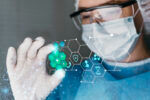Technology has revolutionized fitness and anti-aging practices, offering advancements in medical aesthetics and rejuvenation. These innovations provide options to enhance appearance and maintain a youthful look. However, it’s important to consider both the benefits and potential disadvantages of these advancements. Let’s explore recent medical advancements and their drawbacks in the pursuit of looking fit and young.
Non-Invasive Body Sculpting
Non-invasive body sculpting techniques such as CoolSculpting and SculpSure use technology to eliminate stubborn fat pockets without surgery or downtime. These procedures target specific areas of the body, like the abdomen or thighs, by freezing or heating fat cells, leading to their gradual elimination.
Disadvantage
While non-invasive body sculpting can provide noticeable results, multiple sessions may be required for optimal outcomes. Additionally, the cost of these procedures can be relatively high, and some individuals may experience temporary side effects like redness, swelling, or discomfort.
Laser Skin Rejuvenation
Laser treatments like fractional laser resurfacing and intense pulsed light (IPL) therapy promote skin rejuvenation by stimulating collagen production, reducing fine lines, wrinkles, and improving overall skin texture. These treatments are effective in addressing sun damage, pigmentation issues, and signs of aging.
Disadvantage
Laser skin rejuvenation may require multiple sessions to achieve desired results, and there is a possibility of mild discomfort during the procedure. In some cases, individuals with certain skin conditions or sensitivities may experience temporary redness, swelling, or hyperpigmentation.
Injectable Treatments
Injectable treatments like Botox and dermal fillers have gained popularity for their ability to reduce wrinkles, restore volume, and enhance facial contours. Botox injections relax muscles to minimize the appearance of dynamic wrinkles, while dermal fillers add volume to areas such as lips, cheeks, and nasolabial folds.
Disadvantage
While injectable treatments can provide effective results, they are temporary and require regular maintenance to sustain the desired outcome. Adverse effects may include bruising, swelling, or asymmetry if not performed by a skilled and experienced medical professional.
Platelet-Rich Plasma (PRP) Therapy
PRP therapy involves drawing a patient’s blood, processing it to concentrate platelets, and injecting the platelet-rich plasma into targeted areas. It is commonly used for facial rejuvenation, hair restoration, and skin rejuvenation, harnessing the body’s natural healing and regenerative properties.
Disadvantage
PRP therapy is generally considered safe since it utilizes the patient’s blood, reducing the risk of allergic reactions or adverse effects. However, the effectiveness of PRP may vary among individuals, and multiple sessions may be necessary for optimal results.
High-Tech Fitness Devices
High-tech fitness devices like smartwatches, fitness trackers, and mobile applications provide real-time tracking of physical activities, heart rate, sleep patterns, and calorie expenditure. They offer personalized insights, goal setting, and motivation to improve fitness levels and overall well-being.
Disadvantage
While these devices can be valuable tools for monitoring fitness progress, they should not replace professional guidance. Over-reliance on technology may lead to an obsessive focus on numbers and metrics, potentially affecting one’s mental well-being and creating an unhealthy relationship with exercise.
Genetic Testing and Personalized Medicine
Genetic testing has gained attention for its potential to provide personalized health and fitness recommendations based on an individual’s genetic makeup. It can help identify genetic predispositions to certain conditions, guide nutrition, and exercise choices, and optimize overall wellness strategies. However, the interpretation of genetic data can be complex, and there may be limitations in terms of the available research and understanding of genetic factors.
In conclusion, recent technological advancements have significantly influenced the way we approach fitness and anti-aging practices. Non-invasive body sculpting, laser skin rejuvenation, injectable treatments, PRP therapy, high-tech fitness devices, and telemedicine have all contributed to improving our ability to look fit and young. However, it is important to recognize that these advancements come with potential disadvantages, such as the need for multiple sessions, temporary effects, associated costs, and the importance of selecting qualified professionals for procedures. It is crucial to weigh the pros and cons, consult with experts, and make informed decisions based on individual needs and goals when considering these technologies for fitness and anti-aging purposes.





